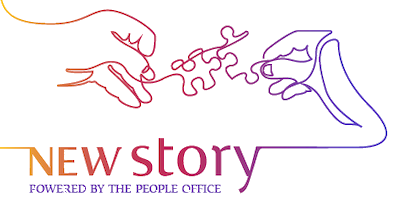Since the beginning of the story HR functions on the service model where each HR function reports to the HR Director in a formula structured by content and expertise. In the large companies a second service model gradually developed, spun from the idea that HR is more than an internal provider of services, but a strategic business partner. As HR professionals accumulated experience and consolidated their understanding of their role, they began to wonder “what value added does HR bring?”
There are several answers to this question, but the most widely known and appreciated remains the one given by Dave Ulrich in 1997. He says that HR means not only efficiency and functional excellence, but also a strategic understanding of business and declining that strategy into an HR strategy. Therefore, that HR is not only a subordinated function with responsibilities in implementation, but a business partner.
The HR strategy
The strategic HR provides answers to a) who is HR? a partner, an ally, an expert; b) what does HR deliver? results translated into productivity and healthy successful organizational culture; c) why do we need HR? because it brings value added and adapted solutions and it represents the people in the company, their needs and their input.
What are the deliverables of HR strategy? productivity, better quality of employees through increased competence, contribution and engagement level. Competence grows through selection and onboarding processes and people management from hiring to leaving through training, development and other actions. Contribution increases when people are aware of the purpose of their work and feel active part of the organization.
The famous GALLUP study related to engagement, which is the result of 30 years of work from the polling organization and gathers the result of responses from over 17 Mio employees shows that the first position in the top of what motivates us remains “I understand what the organization wants from me”. The level of engagement rises when people understand and are content with what the organization offers, which in HR speak is called “employee value proposition”. When people get what the company wants from them they can add value and better results, they are motivated to contribute the very best they have. So this strategic HR needed a new role:
HRBP – the HR Business Partner
This role was developed to act as a Relationship Manager or Key Account for a business line, interacting with business as equal partner and accompanying the business strategy with the human resources strategy and building relationships within the company. It is as such a generalist role, requiring professional expertise mid-level of all HR areas but high level of expertise on building and maintaining relationships, collaborating, identifying solutions for business needs and connect the demands of business with the different HR functions.
What does a successful HRPB look like?
It is a profile mixing empathy and communication with organizational skills and structure, because HRBPs are expected to manage discussions about salary increases, incentive schemes design, action plans to improve performance, career path development and collective restructuring projects. So in order to be able to do this credibly, the HRBP calls on the support of the HR functions and their expertise to offer solutions to the business, but manages globally, coherently the relationship with the business line who is assigned as his counterparty, thus acting as a strategic business partner and as a miniature HR Director in the relationship with the business line rather than just implementing someone else’s decisions.
HRBP – a strategic role
Furthermore, the HRBP sits with the business at the decisions table and is consulted directly, makes use of data from studies, has one on one meetings and talks to the team so as to create impactful solutions and in this way has the opportunity to put forward the people component and the way people can be impacted by the decisions taken by managers. To do all this, the HRBP needs to be an expert, leader and professional who has developed a network of connections within the company and outside of it, a good communicator, adaptable to fluid context, all the more so as we are aware that VUCA (volatility, uncertainty, complexity, ambiguity) has become intrinsic to each day of our professional lives.
HR: with people and about people
Either as departments with specific roles either within the HRPB service model, the human resources area continues to form an essential component of any organization. Because beyond fixed assets, projects and budgets a company is made – more than anything else – of people. And a successful HR addresses this component and people’s needs, creating a successful organizational culture or – as Tony Hsieh would have it – delivering happiness.
Delivering happiness
The role of the organization is to select a goal and move towards it through its employees and due to the fact that they believe in it and live it every day, illustrate it and act as its ambassadors. I was reminded of Hsieh’s book as his organizational culture in Zappos was so centered on the customer that the employees had become friends with the clients, their customer care team going way beyond checking on deliveries (Zappos was a company delivering shoes). The customers had gone to a point of connection with the employees that they would call the call center and ask: “I’d like to take a girl out today, could you recommend a nice pizza place I could take her to?”
“Delivering happiness” sums up HR’s mission to create – where its role in the organization allows it to- a culture of motivation, growth, inclusion, encouraging excellence, innovation and initiative. Zappos stands proof that it works.
